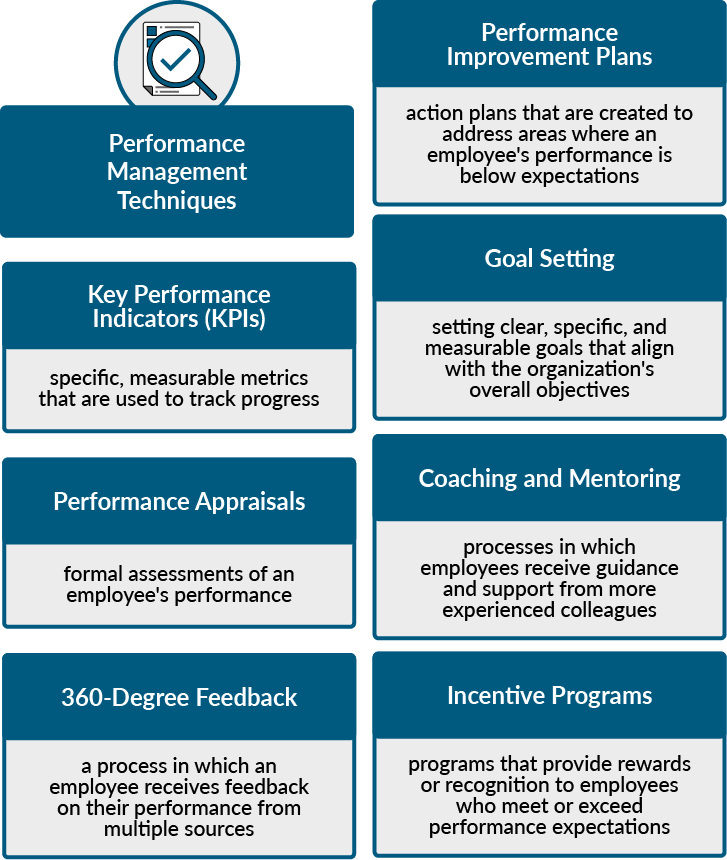Performance Management Techniques
There are several performance management techniques that organizations can use to manage and improve employee performance effectively. Some examples include:

- Key performance indicators (KPIs) are specific, measurable metrics that track progress toward achieving business objectives. They can be used to evaluate individual or team performance and to identify areas where improvement is needed.
- Performance appraisals: These are formal assessments of an employee’s performance, which are typically conducted on an annual or bi-annual basis. They can include reviewing job duties, goal setting, feedback on performance, and identifying areas where improvement is needed.
- 360-degree feedback: This is a process in which an employee receives feedback on their performance from multiple sources, including managers, peers, and subordinates. It provides a more comprehensive view of an employee’s strengths and weaknesses and can be used to identify areas where improvement is needed.
- Performance improvement plans: These action plans are created to address areas where an employee’s performance is below expectations. They typically include specific goals, timelines, and strategies for improvement.
- Goal setting: This involves setting clear, specific, and measurable goals that align with the organization’s objectives. It provides a roadmap for employees to follow and can help ensure their work is focused on achieving specific outcomes.
- Coaching and mentoring: These are processes in which employees receive guidance and support from more experienced colleagues. They can help to develop employees’ skills and abilities and to improve their overall performance.
- Incentive programs: These are programs that provide rewards or recognition to employees who meet or exceed performance expectations. They can be financial or non-financial, including bonuses, promotions, or public recognition.
These performance management techniques are designed to help organizations improve employee performance, achieve business objectives, and drive overall success.
The ultimate goal of performance management is to improve organizational effectiveness and individual employee performance. It enables organizations to identify areas of improvement and develop strategies to address them, leading to increased productivity, improved morale, and higher levels of employee engagement.